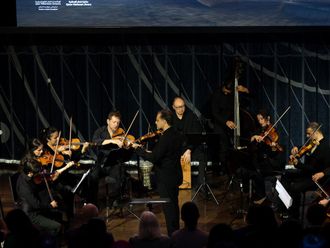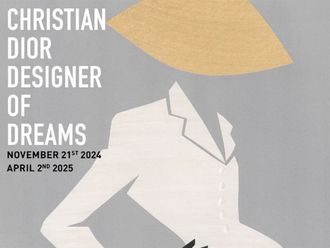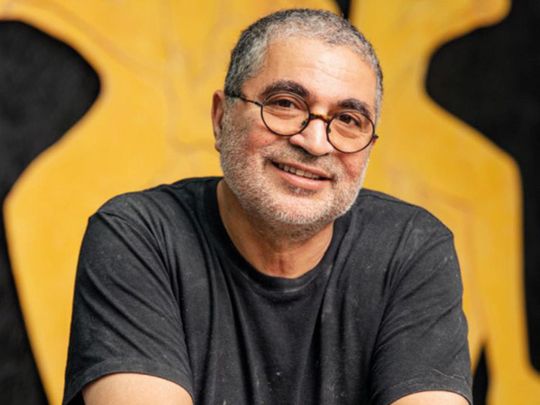
In the vibrant tapestry of the art world, there are a few threads that stand out, weaving stories that transcend borders, cultures and disciplines. Multi-talented Moroccan artist Mahi Binebine, whose journey has traversed the bustling streets of Marrakech, the artistic hubs of Paris and the buzzing energy of New York, stands as a testament to the transformative potential of such powerful stories. In a humbling conversation with the man behind the words and images, it quickly became evident that his artistic voyage is as rich and colourful as his work.
Binebine’s artistic journey, he revealed, had rather unconventional beginnings. In his youth, he dreamed of becoming a crooner, making music his first artistic intention. That, coupled with a strong literary foundation nurtured in his family, laid the groundwork for his artistic exploration. However, the warmth and emotion of that style of singing did not come to him through a microphone, but rather through a pen and a paintbrush. His true awakening, however, came when he moved to Paris for his studies and visited a museum for the first time: “We had nothing of the kind in Morocco, and I was dazzled by this world that I discovered at 18.” This serendipitous visit ignited a passion for art that would set the stage for his lifelong creativity and self-expression.
Throughout his career, Mahi has lived and created in Marrakech, Paris and New York, each leaving its unique imprint on his artistic journey. When asked which city had inspired him the most, he offered a perspective that transcended geographical boundaries: “Everything actually happens inside yourself. The external environment does not matter, even if there are some small influences.”
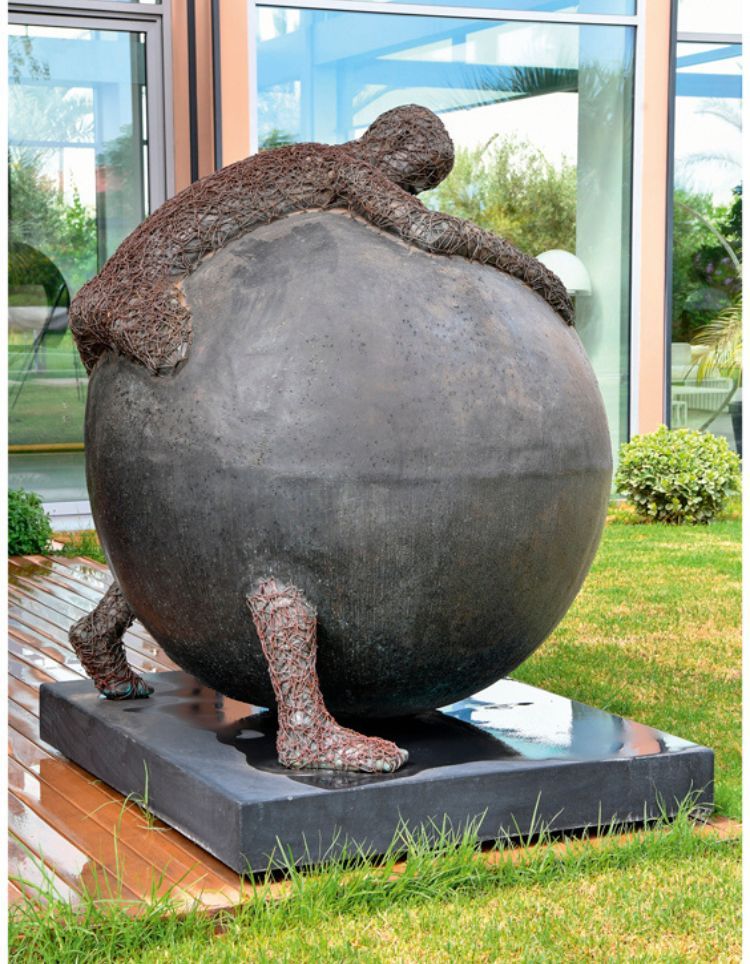
He went on to describe the enchantment of Marrakech, with its crimson-hued walls, Majorelle gardens’ magical blue, lush green parks and unique light naturally lending themselves to visual art. “It is almost inevitable to become a visual artist in this city,” he mused. While Paris introduced him to the masters of the Renaissance and the birth of Modern Art, New York’s unrelenting madness and ceaseless energy brought a new layer to his artistic perspective, and the combination of all three is striking.
In 2002, Binebine made the life-altering decision to return to Marrakech after decades spent abroad. He cited the rise of intolerance that year in the land of human rights—that of Voltaire and Victor Hugo—as a catalyst for his decision. This pivotal moment coincided with a period of transformation in Morocco, with King Mohamed VI initiating a democratic process in the country. Mahi saw this as an opportunity to contribute positively to his homeland.
From one transition to a much older one, we go back to Binebine’s transition from the world of mathematics, a field he studied and taught for eight years, to becoming a multi-disciplinary artist. When asked about the radical shift, he drew an intriguing parallel between math and art. “You know, mathematics is everywhere,” he explained. “We start from point A to arrive at point B, following a path marked with constraints. Literature is no different. All visual artists will tell you that a canvas obeys the laws of balance.” This profound connection between mathematics and art underscores Mahi’s belief that artistic expression often adheres to the principles of balance, proportion and constraint. And his role as a mathematics teacher to his own daughters—despite their resistance—serves as a testament to his commitment to instill the poetry of math in young minds.
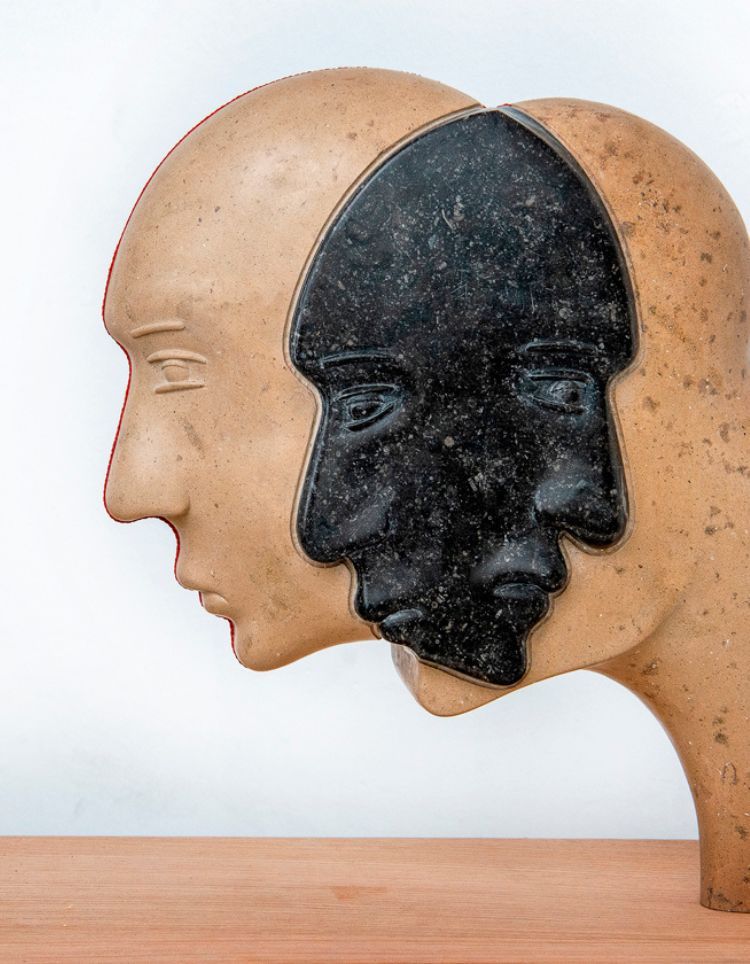
Delving into his creative process, the writer shared insights into his latest novel, My Ghost Brother, which explores the inner conflicts of two characters sharing the same body, in a perpetual struggle. He confessed: “So, I spend my life negotiating with myself. But in the end, my ghosts always get along.” This internal dialogue and reconciliation of conflicting ideas are evident in his art, through his novels, paintings and sculptures. Throughout his career, Binebine has been unapologetically vocal about the social and political messages embedded within his art. “In Africa and the Arab world, artists feel invested with a quixotic mission of righting wrongs,” he remarked. In fact, his art reflects the tumultuous history of Morocco, including the harsh years of severe repression—and his brother’s harrowing 20-year imprisonment. “That can all be found in my work. A sort of catharsis for my family and me.”
Mahi’s art is often characterised by a strong conceptual foundation, challenging traditional notions of aesthetics. Yet, he strikes a balance between concept and material, refusing to prioritize one over the other. He emphasised: “In conceptual art, there is. Many artists have great ideas and forget to paint. It’s not my case. I do not privilege the idea over the realisation.” This equilibrium between concept and execution enables him to convey his powerful messages while captivating viewers with the visual allure of his art.
His portfolio seamlessly blends abstract and figurative elements, a wink to his background as a novelist, where storytelling is paramount. For him, figures and masks serve as a preferred narrative tool, allowing him to tell stories through his art while retaining a strong focus on colour, a characteristic that defines his work. It is a delicate dance between the figurative and the abstract, always exploring the same themes of ghosts and balance.
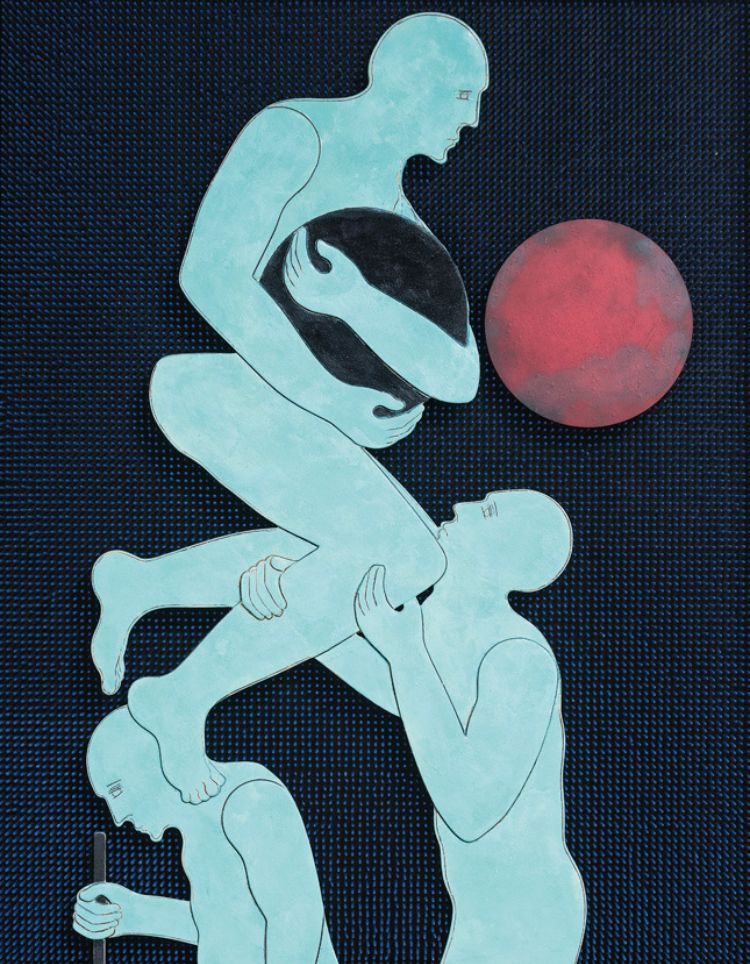
In a career that has spanned multiple artistic disciplines, Binebine has found a link between these forms of expression. “When I start a novel, I settle inside the character, I model their feelings to create an image which ends up forming in front of the reader. On the other hand, when I paint, I start by sketching a superficial silhouette. To bring it to life, I then dig deeper to see its soul. Between literature and painting, there is a back and forth of rare complementarity.” Mahi seamlessly navigates between writing in the morning and painting in the afternoon. “When I’ve spent hours talking about illegal immigration, in the afternoon I paint boat people,” he shares. This fluidity between literature and painting is central to his creative journey, with each art form influencing and enriching the other.
This kinship between poetry and painting is only intensified by Binebine being a poet himself. When asked if his famous saying ‘Le poète est un intermédiaire entre l’homme raisonnable et le fou.’ which translates into: ‘The poet is a middle ground between the reasonable man and the madman.’ applies to the artist too, he dissects it as such: “But the painter is a poet, since he spends his life dreaming. Both are in fact channels of sensitivity that receive talent from I don’t know where, digest it, suffer when it is necessary to suffer, laugh when it is necessary to laugh, to finally offer you a better world.” And a better world is something Mahi strives for every day, even beyond his art. After the Casablanca attacks in 2003, he wrote a book to try to understand why and how fourteen young Moroccans from a shantytown could have become human bombs, taking away innocent lives. His impact also extends to cultural centers established in the slums of Morocco, in collaboration with filmmaker Nabil Ayouch who adapted Binebine’s novel The Stars of Sidi Moumen under the title The Horses of God. The two activists already gathered a thousand children in each of their seven centers, which house a cinema, a music room, a library and a dance room. These centers, situated in lower income areas, provide children with access to culture and arts, effectively challenging extremism by celebrating life and creativity: “We teach children the culture of life. And it is Art that saves them.”
Mahi Binebine’s dedication to using art as a vehicle for social change reflects a deep commitment to make the world a better place. As we look to the future, we can only anticipate more groundbreaking work from this visionary artist, as he continues to weave dreams into his art, inspiring and connecting with audiences worldwide.
Mahi Binebine’s exhibition at the Sprovieri Gallery in London has welcomed remarkable success, with three-quarters of the exhibition sold out before the opening. Looking ahead, Binebine’s schedule is packed with projects: an ongoing exhibition in Germany, a Menart exhibition in Paris and an exhibition in Miami coinciding with Art Basel. Additionally, he has recently been appointed curator of the Moroccan pavilion at the next Venice Biennale, where he will showcase the talents of three Moroccan artists: Fatiha Zemmouri, Safae Erruas and Majida Khattari.
But also as I write these words, sadness casts a gloomy shadow on those successes; Mahi’s beloved Morocco has suffered from a terrible earthquake that engulfed thousands of people in its relentless embrace, leaving the artist and his compatriotes in a harrowing state, as he shares with us. Our thoughts go to the people of Morocco, wishing them courage and better days ahead.


